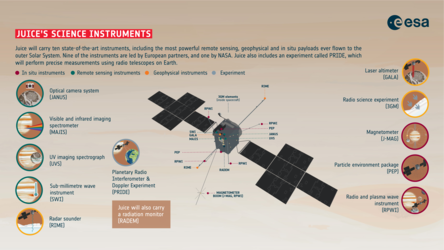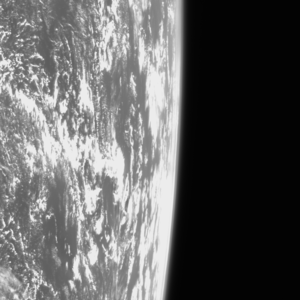Accept all cookies Accept only essential cookies See our Cookie Notice

About ESA
The European Space Agency (ESA) is Europe’s gateway to space. Its mission is to shape the development of Europe’s space capability and ensure that investment in space continues to deliver benefits to the citizens of Europe and the world.
Highlights
ESA - United space in Europe
This is ESA ESA facts Member States & Cooperating States Funding Director General Top management For Member State Delegations European vision European Space Policy ESA & EU Space Councils Responsibility & Sustainability Annual Report Calendar of meetings Corporate newsEstablishments & sites
ESA Headquarters ESA ESTEC ESA ESOC ESA ESRIN ESA EAC ESA ESAC Europe's Spaceport ESA ESEC ESA ECSAT Brussels Office Washington OfficeWorking with ESA
Business with ESA ESA Commercialisation Gateway Law at ESA Careers Cyber resilience at ESA IT at ESA Newsroom Partnerships Merchandising Licence Education Open Space Innovation Platform Integrity and Reporting Administrative Tribunal Health and SafetyMore about ESA
History ESA Historical Archives Exhibitions Publications Art & Culture ESA Merchandise Kids Diversity ESA Brand Centre ESA ChampionsLatest
Space in Member States
Find out more about space activities in our 23 Member States, and understand how ESA works together with their national agencies, institutions and organisations.
Science & Exploration
Exploring our Solar System and unlocking the secrets of the Universe
Go to topicAstronauts
Missions
Juice Euclid Webb Solar Orbiter BepiColombo Gaia ExoMars Cheops Exoplanet missions More missionsActivities
International Space Station Orion service module Gateway Concordia Caves & Pangaea BenefitsLatest
Space Safety
Protecting life and infrastructure on Earth and in orbit
Go to topicAsteroids
Asteroids and Planetary Defence Asteroid danger explained Flyeye telescope: asteroid detection Hera mission: asteroid deflection Near-Earth Object Coordination CentreSpace junk
About space debris Space debris by the numbers Space Environment Report In space refuelling, refurbishing and removingSafety from space
Clean Space ecodesign Zero Debris Technologies Space for Earth Supporting Sustainable DevelopmentLatest
Applications
Using space to benefit citizens and meet future challenges on Earth
Go to topicObserving the Earth
Observing the Earth Future EO Copernicus Meteorology Space for our climate Satellite missionsCommercialisation
ESA Commercialisation Gateway Open Space Innovation Platform Business Incubation ESA Space SolutionsLatest
Enabling & Support
Making space accessible and developing the technologies for the future
Go to topicBuilding missions
Space Engineering and Technology Test centre Laboratories Concurrent Design Facility Preparing for the future Shaping the Future Discovery and Preparation Advanced Concepts TeamSpace transportation
Space Transportation Ariane Vega Space Rider Future space transportation Boost! Europe's Spaceport Launches from Europe's Spaceport from 2012Latest

Juice images the cloud of charged particles around Earth
Thank you for liking
You have already liked this page, you can only like it once!
As ESA’s Jupiter Icy Moons Explorer (Juice) sailed past the Moon and Earth in August 2024, the mission team took the opportunity to try out the many scientific instruments aboard the spacecraft. The centre of this infographic shows the sharpest-ever image of the cloud of charged particles trapped in Earth’s magnetic field, while the insets show measurements of high-energy ions and electrons detected along the flyby route.
The image and in situ measurements were taken by two sensors provided by NASA for Juice’s Particle Environment Package (PEP).
The Jovian Energetic Neutrals and Ions (JENI) sensor took the image as Juice soared away from Earth. What it captured is invisible to the human eye – unlike traditional cameras, JENI doesn't rely on light. Instead, it can capture energetic atoms emitted by charged particles that interact with hydrogen gas coming from Earth's atmosphere. This reveals the shape of the charged particle cloud surrounding Earth.
Click here to see a video compilation of images taken by JENI following the lunar-Earth flyby.
The JENI sensor is the newest generation of this type of camera, building on the success of a similar instrument used in the NASA/ESA/ASI Cassini-Huygens mission that revealed the magnetospheres of Saturn and Jupiter.
On 20 August 2024, as Juice hurled into Earth’s magnetosphere and passed some 60 000 km above the Pacific Ocean, JENI and its companion sensor Jovian Energetic Electrons (JoEE) got their first taste of the harsh environment that awaits at Jupiter.
They encountered the dense, lower-energy plasma (ions and electrons) characteristic of this region before flying through the heart of Earth’s radiation belts. There, the instruments measured the million-degree plasma encircling Earth to investigate the secrets of plasma heating that are known to fuel dramatic phenomena in planetary magnetospheres.
More about Juice's lunar-Earth flyby
More about Juice's instruments
The Jovian Energetic Neutrals and Ions (JENI) and Jovian Energetic Electrons (JoEE) sensors are built and managed by the Johns Hopkins Applied Physics Laboratory (APL) in Laurel, Maryland, USA, on behalf of NASA. They make up the high-energy particle detectors of Juice’s Particle Environment Package (PEP).
[Image description: On a starry background, the Moon is on the top right, Earth in the centre and the Juice spacecraft on the lower left. A curved dotted line shows the Juice’s trajectory, from right to left. Two white ovals surround Earth, indicating Earth’s radiation belts. Behind Earth, a roughly oval-shaped colourful image shows the density of charged particles imaged by Juice’s JENI sensor, with dark red, particle-dense regions visible at 1, 6 and 11 o’clock directions around Earth. The lower right shows the energies of particles measured by Juice’s JENI and JoEE sensors as Juice flew through the radiation belts.]
-
CREDIT
ESA/NASA/Johns Hopkins APL/Josh Diaz -
LICENCE
CC BY-SA 3.0 IGO or ESA Standard Licence
(content can be used under either licence)

Juice's flight through Earth's radiation belts

Juice’s instruments

Juice’s science instruments

Juice NavCam view of Earth















 Germany
Germany
 Austria
Austria
 Belgium
Belgium
 Denmark
Denmark
 Spain
Spain
 Estonia
Estonia
 Finland
Finland
 France
France
 Greece
Greece
 Hungary
Hungary
 Ireland
Ireland
 Italy
Italy
 Luxembourg
Luxembourg
 Norway
Norway
 The Netherlands
The Netherlands
 Poland
Poland
 Portugal
Portugal
 Czechia
Czechia
 Romania
Romania
 United Kingdom
United Kingdom
 Slovenia
Slovenia
 Sweden
Sweden
 Switzerland
Switzerland

























